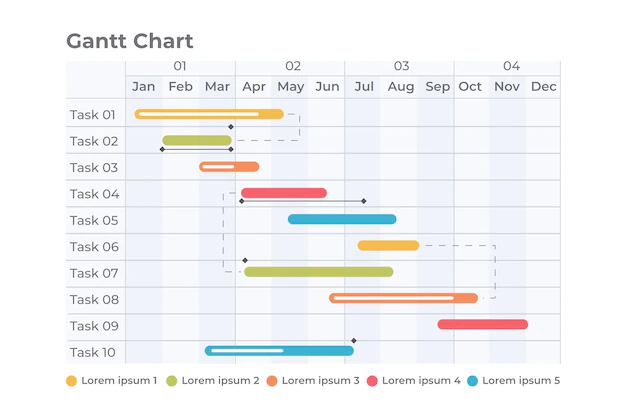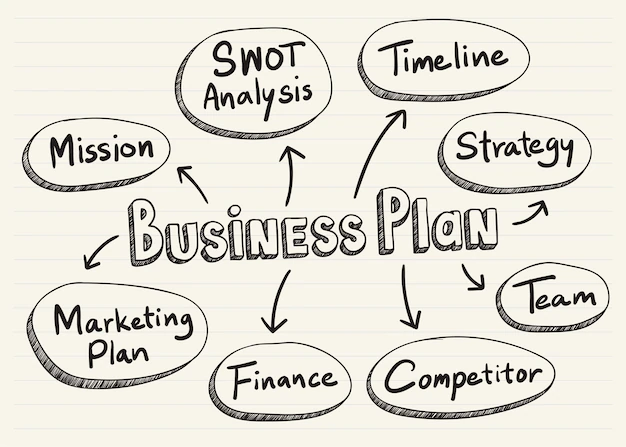45 Project Management Tools And Techniques To Gain Success


by Signe Hegart
November 20, 2023
In today’s competitive business environment, effective project management is essential for success. This blog explores 45 Project Management Tools And Techniques to enhance team performance and drive project success. Beyond tools, we’ll also discuss integrating employee incentives to motivate teams and foster a culture of productivity and innovation. Join us as we navigate the project management landscape and discover how this combined approach can propel your teams to unparalleled success.
Jump to section
What are Project Management Tools And Techniques?
Project Management Tools And Techniques are resources and strategies used by project managers and their teams to plan, execute, and monitor projects effectively. Project Management Tools And Techniques help in organizing and coordinating tasks, resources, and timelines to ensure project success.
Why are Project Management Tools and Techniques important? ✅
Project Management Tools and Techniques are crucial for several reasons:
- Efficient Planning: Project Management Tools And Techniques help in developing comprehensive project plans, outlining tasks, timelines, resources, and dependencies, which ensures that everyone involved understands their role and the overall project objectives.
- Resource Optimization: Project Management Tools And Techniques assist in resource allocation and leveling, ensuring that resources are used efficiently and that workloads are balanced across the team.
- Communication and Collaboration: Project Management Tools And Techniques facilitate communication and collaboration among team members, stakeholders, and project managers. This helps in keeping everyone informed, reducing misunderstandings, and fostering a collaborative environment.
- Risk Management: These Project Management Tools And Techniques aid in identifying, assessing, and mitigating risks. By having a clear understanding of potential risks, project managers can develop strategies to minimize their impact on the project.
- Time Management: Techniques such as Critical Path Method (CPM) and Gantt charts help in scheduling and tracking tasks, enabling project managers to manage and control project timelines effectively.
- Quality Assurance: Quality Project Management Tools And Techniques ensure that the project delivers products or services that meet the specified standards and requirements.
- Cost Control: Tools like Earned Value Management (EVM) assist in monitoring and controlling project costs. This is essential for staying within budget and making informed decisions regarding financial aspects of the project.
Read also: What You Need To Know: Mastering Employee Rewards and Recognition
Employee incentives as a Project Management Tools And Techniques ????
Employee incentives are an essential aspect of project management, contributing to motivation, productivity, and overall project success. Here are some ways in which employee incentives can be considered as Project Management Tools And Techniques:
Recognition and Rewards:
- Tool: Recognition Programs
- Technique: Establishing a formal recognition program where team members are acknowledged for their hard work and achievements. This can include awards, gift cards, certificates, or public recognition during team meetings.

Send yourself an employee incentive
Performance Bonuses:
- Tool: Financial Incentives
- Technique: Offering performance bonuses tied to specific project milestones or individual achievements. This provides tangible rewards for exceptional efforts and results.
Training and Development Opportunities:
- Tool: Learning and Development Programs
- Technique: Providing opportunities for skill development and training. This not only benefits the employee but also enhances their contribution to the project.
Flexible Work Arrangements:
- Tool: Work-Life Balance Initiatives
- Technique: Allowing flexible work hours or remote work options can be an attractive incentive. This recognizes and accommodates individual needs and preferences, contributing to a healthier work-life balance.
Read also: 35 Tools For Managers: Elevate Your Leadership Game
45 Project Management Tools And Techniques
Project management involves the application of various tools and techniques to effectively plan, execute, and close projects. Here are 45 project management tools and techniques that are commonly used in the field:
1. Project Charter
The Project Charter serves as the project’s foundational document, formally initiating and authorizing its existence. Beyond its role as a project’s birth certificate, the charter crystallizes the project’s objectives, scope, and stakeholders. It provides a high-level overview that ensures everyone involved, from team members to stakeholders, shares a common understanding of the project’s purpose and expected outcomes. The charter is a guiding document that helps maintain focus and alignment throughout the project’s life cycle, acting as a reference point for decision-making and scope management.
2. Work Breakdown Structure (WBS)
The Work Breakdown Structure (WBS) is a powerful tool that takes the project’s overall scope and breaks it down into smaller, more manageable components. This hierarchical decomposition enables the project team to understand the project’s structure, allocate resources efficiently, and plan tasks with precision. The WBS serves as a roadmap for project execution, ensuring that every element of the project is accounted for and contributing to the overall objectives. By providing a visual representation of the project’s structure, the WBS enhances communication, aids in resource allocation, and establishes a clear framework for tracking progress.
3. Gantt Chart

The Gantt Chart is a visual representation that transforms project timelines and tasks into a graphical format. It provides a comprehensive overview of project schedules, displaying task dependencies, durations, and start and end dates. Gantt charts are instrumental in project planning and tracking, allowing project managers to identify potential bottlenecks, allocate resources effectively, and communicate timelines to stakeholders. The visual nature of Gantt charts simplifies complex schedules, making them accessible to both project teams and stakeholders, fostering a shared understanding of the project’s timeline and progress.
4. Critical Path Method (CPM)
Critical Path Method (CPM) is a network diagramming technique designed to identify the critical path in a project. The critical path represents the sequence of tasks that, if delayed, would extend the project’s overall duration. By analyzing task dependencies and durations, CPM helps project managers identify the most time-sensitive activities and allocate resources accordingly. CPM enhances project scheduling accuracy, allowing for effective resource management and timely completion. This method is particularly useful for projects with stringent deadlines or those where timely delivery is of utmost importance.
5. Program Evaluation and Review Technique (PERT)
PERT is a statistical tool that complements project management by providing a probabilistic approach to task duration estimation. It incorporates three time estimates for each task—optimistic, pessimistic, and most likely—to calculate a weighted average, offering a more nuanced and probabilistic view of project timelines. PERT is particularly valuable in projects with high uncertainty and complexity, providing a more realistic assessment of project completion dates. By incorporating variability into task duration estimates, PERT helps project managers better understand and manage project risks, fostering a more resilient project management approach.
6. Kanban
Kanban is an agile project management method that originated from lean manufacturing principles. Its primary focus is on visualizing work, optimizing flow, and continuously improving efficiency. By using Kanban boards, teams can visually represent their work, from initial stages to completion, with each task represented as a card. The method emphasizes limiting work in progress, promoting continuous delivery, and fostering a culture of incremental improvement. Kanban is particularly effective in dynamic environments where priorities may shift frequently, providing teams with the flexibility to adapt to changing requirements while maintaining a focus on delivering value.
7. Scrum
Scrum is a widely adopted agile framework that provides a structured yet flexible approach to managing complex knowledge work. It divides projects into fixed-length iterations called sprints, usually lasting two to four weeks. Scrum promotes collaboration, transparency, and adaptability, with defined roles (such as Scrum Master and Product Owner) and ceremonies (such as Sprint Planning and Daily Standups). Scrum’s iterative and incremental nature enables teams to respond to changing requirements efficiently, delivering a potentially shippable product increment at the end of each sprint. It is particularly well-suited for projects where requirements may evolve or are not well-defined initially.
8. Risk Management

Risk management is a systematic process of identifying, assessing, and prioritizing risks to minimize their impact on a project. It involves a proactive approach to foresee potential challenges and develop strategies to mitigate or respond to them. Effective risk management contributes to project success by enhancing decision-making, resource allocation, and overall project resilience. It involves ongoing monitoring and adjustment as the project progresses. By integrating risk management into project planning, teams can identify opportunities, prevent potential issues, and improve the likelihood of achieving project objectives in a controlled manner.
9. SWOT Analysis
SWOT analysis is a strategic planning tool used to evaluate Strengths, Weaknesses, Opportunities, and Threats related to a project. It provides a holistic view of the project’s internal and external factors, helping teams make informed decisions. By identifying strengths and weaknesses within the project and recognizing external opportunities and threats, project managers can develop strategies to capitalize on strengths, address weaknesses, exploit opportunities, and mitigate threats. SWOT analysis is valuable during project initiation and planning, guiding teams to align their actions with overall project goals and navigate challenges effectively.
10. Stakeholder Analysis
Stakeholder analysis is a systematic process of identifying and assessing the influence, interests, and needs of various stakeholders in a project. This technique ensures that project managers understand the expectations and concerns of key stakeholders, enabling effective communication and engagement strategies. By categorizing stakeholders based on their level of interest and influence, project managers can tailor communication plans, manage expectations, and build positive relationships. Stakeholder analysis contributes to project success by fostering stakeholder support and minimizing resistance, ultimately ensuring that the project aligns with the broader organizational goals and satisfies key stakeholder interests.
11. Resource Histogram
A Resource Histogram is a visual representation that provides a snapshot of how resources are allocated over the course of a project. Typically displayed as a bar chart, it allows project managers to see the distribution of resources, such as team members or equipment, over time. This tool aids in identifying periods of resource constraints or overutilization, facilitating better resource planning and allocation. By visualizing resource availability, project managers can make informed decisions to optimize workloads, prevent bottlenecks, and ensure that the project team operates efficiently throughout the project’s lifecycle.
12. Project Management Software
Project Management Software has become indispensable in modern project management practices. Tools like Microsoft Project, Asana, Jira, Trello, and others offer centralized platforms for planning, scheduling, collaboration, and tracking project progress. These tools streamline communication, enhance collaboration among team members, and provide real-time visibility into project timelines and milestones. Project management software supports efficient resource allocation, task management, and the organization of project-related documentation. The automation features within these tools save time, reduce errors, and contribute to overall project success by fostering a collaborative and well-organized project environment.
13. Earned Value Management (EVM)

Earned Value Management (EVM) is a project management technique that integrates scope, schedule, and cost performance to measure project progress and performance. It provides a comprehensive view of a project’s health by analyzing the budgeted cost of work performed (BCWP), actual cost of work performed (ACWP), and the budgeted cost of work scheduled (BCWS). EVM helps project managers assess whether the project is on budget and on schedule and provides early warning signs of potential issues. This data-driven approach to performance measurement enables informed decision-making, allowing project managers to take corrective actions to keep the project on track.
14. Monte Carlo Analysis
Monte Carlo Analysis is a statistical method used to model the probability of different outcomes in a project. By simulating various scenarios and incorporating uncertainties, Monte Carlo Analysis provides a range of possible project outcomes and the likelihood of each scenario. This tool is particularly useful in risk management, allowing project managers to understand the impact of uncertainties on project schedules and budgets. By quantifying risks and uncertainties, Monte Carlo Analysis assists in developing more robust contingency plans, helping project teams proactively manage and mitigate potential challenges.
15. Communication Plan
A Communication Plan is a structured document outlining the communication strategy for a project. It defines how project information will be shared, who the stakeholders are, and what channels and methods will be used for communication. A well-crafted Communication Plan ensures that the right information reaches the right stakeholders at the right time, reducing misunderstandings and fostering a collaborative project environment. This plan typically includes details such as the project’s communication objectives, key messages, stakeholders’ communication preferences, and a schedule for regular updates. A thoughtful Communication Plan contributes to transparency, stakeholder engagement, and overall project success by establishing clear guidelines for effective project communication.
16. Quality Management
Quality Management is a comprehensive set of processes and methodologies designed to ensure that a project meets the specified quality standards and requirements. It involves activities such as quality planning, quality assurance, and quality control. Quality planning establishes the standards and processes to be followed, while quality assurance ensures that these standards are being followed throughout the project. Quality control involves monitoring and verifying that the project’s deliverables meet the defined quality criteria. By implementing effective quality management practices, projects can enhance customer satisfaction, reduce rework, and build a reputation for delivering high-quality outcomes.
17. Issue Log
The Issue Log is a document used to systematically track and manage issues within a project. An issue, in this context, refers to any unexpected event, challenge, or deviation from the project plan that requires attention. The Issue Log captures details such as the issue description, its impact on the project, proposed solutions, and the responsible party for resolution. By maintaining an Issue Log, project managers can address problems promptly, prevent them from escalating, and track the resolution progress. This tool promotes transparency, accountability, and continuous improvement by providing a historical record of challenges and their resolutions.
18. Change Control

Change Control is a structured process that ensures changes to the project, whether they involve scope, schedule, or resources, are formally approved and documented. It involves assessing the impact of proposed changes, obtaining approval from relevant stakeholders, and updating project documentation accordingly. Change Control helps in preventing scope creep, maintaining project focus, and avoiding uncontrolled changes that can lead to budget overruns and timeline delays. By implementing a change control process, project managers can strike a balance between flexibility and control, ensuring that modifications are aligned with project objectives and approved by the appropriate authorities.
19. Lessons Learned
Lessons Learned is a critical phase in project management that involves reviewing the project upon completion to document what went well, what could be improved, and insights gained during the project’s lifecycle. This reflective process helps in identifying successful practices to be replicated in future projects and areas for improvement to enhance project management processes. Lessons Learned documents contribute to organizational learning, enabling teams to build on successes and avoid repeating mistakes. This knowledge-sharing approach fosters a culture of continuous improvement, supporting the development of more efficient and effective project management practices.
20. RACI Matrix
The RACI Matrix (Responsible, Accountable, Consulted, Informed) is a chart that identifies and defines the roles and responsibilities of team members and stakeholders for specific tasks or activities within a project. It clarifies who is responsible for executing a task, who is accountable for its success, who needs to be consulted during the process, and who needs to be informed of the progress. The RACI Matrix helps prevent confusion, overlaps, and gaps in responsibilities, ensuring that everyone involved understands their role in the project. This tool improves communication, accountability, and collaboration by providing a clear framework for decision-making and task execution.
21. Decision Matrix
A Decision Matrix is a systematic tool designed to aid in decision-making when evaluating multiple options against a set of criteria. It involves creating a matrix with options as rows, criteria as columns, and assigning weights to each criterion based on its importance. The tool helps in objectively assessing and comparing alternatives by calculating a weighted score for each option. Decision matrices streamline complex decision processes, provide a transparent method for evaluating choices, and assist teams in selecting the most viable option based on predetermined criteria. This systematic approach enhances decision quality, minimizes bias, and encourages a collaborative decision-making process.
22. Pareto Analysis
Pareto Analysis, named after the Pareto Principle (80/20 rule), is a technique for identifying the most significant issues or factors in a situation. It posits that roughly 80% of effects come from 20% of causes. In project management, this analysis helps prioritize efforts by focusing on the factors that contribute most significantly to a problem or project outcome. By identifying and addressing the critical few factors, teams can achieve a disproportionate impact on overall project success. Pareto Analysis is a valuable tool for resource optimization, risk management, and continuous improvement, allowing project managers to allocate efforts where they will yield the greatest results.
23. Mind Mapping

Mind Mapping is a visual representation technique that helps with brainstorming, organizing ideas, and understanding relationships between concepts. It involves creating a diagram that starts with a central idea and radiates outward, connecting related thoughts and concepts. In project management, Mind Mapping is a powerful tool for capturing, organizing, and visualizing information during the planning and ideation phases. It promotes creativity, enhances collaboration, and provides a structured yet flexible approach to idea generation. Mind Maps serve as visual aids for project teams, improving understanding and communication of complex information, fostering innovation, and supporting the development of comprehensive project plans.
Let’s have a chat
24. Fishbone Diagram (Ishikawa)
The Fishbone Diagram, also known as the Ishikawa or Cause-and-Effect Diagram, is a visual tool for identifying and categorizing potential causes of a problem. The diagram resembles a fish skeleton, with the problem statement at the head and categories of potential causes branching off as “bones.” This tool aids in root cause analysis by systematically exploring different factors that may contribute to a problem. In project management, Fishbone Diagrams are used to identify and address issues, fostering a structured approach to problem-solving and preventing recurring problems. It is particularly effective in collaborative problem-solving sessions and continuous improvement initiatives.
25. Benchmarking
Benchmarking involves comparing project processes and performance metrics to industry best practices or competitors to identify areas for improvement and enhance overall project performance. By measuring performance against recognized standards or competitors’ achievements, project managers can identify gaps, set performance goals, and implement best practices. Benchmarking supports informed decision-making, encourages a culture of continuous improvement, and helps project teams stay competitive. Whether focusing on cost, time, quality, or other key performance indicators, benchmarking provides valuable insights that can be leveraged to enhance project efficiency and effectiveness.
26. Resource Levelling
Resource Levelling is a project management technique used to adjust the project schedule to deal with resource constraints. When faced with limited resources or competing priorities, Resource Levelling involves redistributing workloads to prevent resource overallocation. This technique helps in optimizing resource utilization, preventing burnout, and ensuring that project tasks are executed efficiently. By identifying periods of resource constraints and adjusting project schedules accordingly, Resource Levelling contributes to maintaining a balanced and manageable workload throughout the project, reducing the likelihood of delays and improving overall project performance.
27. Agile Estimation Techniques
Agile Estimation Techniques are methods used in agile project management to estimate the effort required for tasks. Techniques such as Planning Poker involve team members collectively assigning relative effort estimates, typically in story points or ideal days, to user stories or tasks. This collaborative approach enhances team engagement, leverages collective knowledge, and provides more accurate and realistic estimates. Agile estimation supports iterative development by allowing teams to adapt and refine estimates as the project progresses. It promotes transparency, improves accuracy in predicting project timelines, and facilitates effective prioritization of tasks based on their estimated effort.
28. Burn Down Chart

A Burn Down Chart is a graphical representation of work left to do versus time. Commonly used in agile and Scrum methodologies, Burn Down Charts provide a visual snapshot of the project’s progress. The chart plots the remaining work on the vertical axis and time on the horizontal axis, depicting the trend of completed work over time. Burn Down Charts are valuable for teams and stakeholders to assess how well the project is tracking against its planned completion. They enable early identification of deviations from the planned schedule, allowing teams to make timely adjustments and ensuring that project goals are achieved within the specified timeline.
29. Pareto Analysis
Pareto Analysis, as mentioned earlier, is a technique for identifying the most important issues or factors in a situation. It is based on the Pareto Principle, which suggests that a significant majority of effects come from a minority of causes. In project management, Pareto Analysis aids in prioritizing efforts by focusing on the vital few factors that contribute most significantly to a problem or project outcome. By identifying and addressing these critical factors, project managers can achieve maximum impact with minimal resources, fostering efficiency and targeted problem-solving.
30. Quality Metrics
Quality Metrics are measurable standards used to evaluate the quality of project deliverables. These metrics provide quantitative data to assess whether project outputs meet predefined quality standards. Quality Metrics may include error rates, defect density, customer satisfaction scores, and other relevant indicators. By establishing and monitoring quality metrics, project managers can identify areas for improvement, track progress, and ensure that project outcomes align with the defined quality criteria. Quality Metrics contribute to a systematic approach to quality management, supporting the delivery of high-quality project results and meeting stakeholder expectations.
31. Conflict Resolution Techniques
Conflict Resolution Techniques are methods employed to address and resolve conflicts within the project team. Common techniques include negotiation, compromise, collaboration, avoidance, and accommodation. Effective conflict resolution is crucial for maintaining a positive team dynamic and ensuring that disagreements do not hinder project progress. Project managers often need to tailor their approach to the specific nature of the conflict and the personalities involved. By addressing conflicts promptly and constructively, project managers can foster a collaborative and harmonious work environment, promoting overall team effectiveness.
32. Cost-Benefit Analysis
Cost-Benefit Analysis is a method for evaluating the benefits of a decision or project against its costs. It involves quantifying both the positive (benefits) and negative (costs) aspects of a decision and comparing them to determine whether the benefits outweigh the costs. Cost-Benefit Analysis is a critical tool for decision-making, helping project managers and stakeholders assess the financial viability of projects and make informed choices. By providing a structured approach to weighing pros and cons, this analysis supports the selection of projects that offer the greatest return on investment and align with organizational goals.
33. Decision Tree Analysis

Decision Tree Analysis is a decision support tool that uses a tree-like model to visualize and evaluate decisions and their potential outcomes. Each branch of the tree represents a decision, with subsequent branches depicting possible outcomes and associated probabilities. Decision Tree Analysis is particularly useful in situations with multiple decision points and uncertain outcomes. It provides a structured approach to decision-making, allowing project managers to assess the risks and benefits of different courses of action. By quantifying the potential outcomes, decision tree analysis helps in making more informed and strategic decisions.
34. Force Field Analysis
Force Field Analysis is a technique for identifying and analyzing forces for and against a proposed change. This method, developed by Kurt Lewin, involves listing the driving forces (factors supporting the change) and restraining forces (factors opposing the change). The analysis helps project managers understand the balance of forces influencing a proposed change and identify strategies to strengthen driving forces or mitigate restraining forces. Force Field Analysis contributes to effective change management by providing a structured approach to assess the dynamics of change initiatives, allowing project managers to anticipate challenges and implement strategies for successful change implementation.
35. Delphi Technique
The Delphi Technique is a structured communication method used to reach a consensus among a group of experts or stakeholders, especially when face-to-face discussions are impractical. It involves a series of rounds where participants provide feedback anonymously, and a facilitator summarizes the responses between rounds. The process continues until a consensus is reached. The Delphi Technique is useful in situations where diverse opinions need to be considered, and it fosters unbiased collaboration. It is commonly employed in risk assessment, forecasting, and decision-making processes to tap into collective knowledge and expertise. The method helps in overcoming biases and allows for more objective and informed decision-making.
36. Brainstorming
Brainstorming is a group creativity technique designed to generate a large number of ideas within a short period. In a brainstorming session, participants are encouraged to express their thoughts and suggestions without fear of criticism. This open and non-judgmental environment promotes creativity and innovation, allowing diverse perspectives to emerge. Brainstorming sessions can be particularly effective in the early stages of project planning, problem-solving, or idea generation. The collective input from team members fosters a collaborative spirit, encourages out-of-the-box thinking, and helps uncover novel solutions to challenges.
37. Risk Response Planning
Risk Response Planning is a crucial step in the risk management process. It involves developing options and actions to enhance opportunities and reduce threats identified during risk analysis. The goal is to create a proactive strategy for managing risks throughout the project life cycle. Response options may include avoiding the risk, mitigating its impact, transferring it to another party, or accepting it with contingency plans in place. By systematically planning responses to potential risks, project managers can enhance the project’s resilience, minimize negative impacts, and capitalize on positive opportunities.
38. Sprint Review

In Scrum, the Sprint Review is a collaborative meeting held at the end of a sprint cycle. It involves the project team, Scrum Master, product owner, and stakeholders. The primary purpose of the Sprint Review is to inspect the increment of work accomplished during the sprint and adapt the product backlog accordingly. During the review, the team showcases the completed work, discusses what went well, and identifies potential improvements. This iterative feedback loop enhances transparency, facilitates communication, and ensures that the product is continually refined based on stakeholder input and evolving project requirements.
39. Regression Analysis
Regression Analysis is a statistical technique used to determine the strength and character of the relationship between one dependent variable and one or more independent variables. In project management, regression analysis can be applied to identify patterns, trends, and correlations within data sets. For example, it could be used to analyze the impact of project variables (such as time, cost, or scope) on project outcomes. Regression analysis provides a quantitative method for understanding the relationships between variables, supporting data-driven decision-making and enabling project managers to make informed predictions about future project performance.
40. Vendor Bid Analysis
Vendor Bid Analysis involves evaluating and comparing bids submitted by different vendors in response to a request for proposal (RFP) or a similar procurement document. The analysis considers various factors, including cost, technical specifications, delivery schedules, and vendor reputation. Project managers use this analysis to select the vendor that offers the best value for the project. It helps ensure that the chosen vendor aligns with the project’s goals, budget constraints, and quality standards. By thoroughly analyzing vendor bids, project managers can make informed decisions that contribute to successful project procurement and supplier management.
41. Cost of Quality (COQ)
The Cost of Quality (COQ) represents the total cost incurred on quality-related activities throughout a project’s life cycle. It includes both the costs of ensuring quality (such as prevention and appraisal costs) and the costs associated with poor quality (such as internal and external failure costs). COQ reflects the investment made to prevent defects, appraise the project’s quality, and address issues when they occur. Analyzing COQ helps project managers make informed decisions about where to allocate resources for the most significant impact on overall project quality. By minimizing the cost of poor quality, organizations can enhance customer satisfaction and reduce rework, contributing to the project’s overall success.
42. Balanced Scorecard
The Balanced Scorecard is a strategic planning and management system used to align business activities with the vision and strategy of an organization. It involves the measurement and evaluation of performance across four perspectives: financial, customer, internal processes, and learning and growth. In project management, the Balanced Scorecard provides a holistic view of the project’s impact on organizational goals. By considering multiple perspectives, it ensures that project managers and stakeholders assess not only financial outcomes but also customer satisfaction, internal efficiency, and the development of organizational capabilities. The Balanced Scorecard supports a balanced and integrated approach to decision-making and performance management in projects.
43. Project Closeout

Project Closeout is the final phase of a project, ensuring that all aspects of the project are completed satisfactorily. This phase involves formalizing acceptance of project deliverables, obtaining customer or stakeholder approval, releasing project resources, and documenting lessons learned. Project Closeout is crucial for formally ending the project and transitioning its outcomes to the operational phase. It includes tasks such as finalizing contracts, conducting a project review, and archiving project documentation. A thorough project closeout ensures that the project is officially concluded, allowing organizations to assess overall project success, capture valuable insights, and prepare for future initiatives.
44. Procurement Management
Procurement Management involves the processes of acquiring goods and services needed for a project. It includes activities such as procurement planning, solicitation, source selection, contract administration, and contract closure. Effective procurement management ensures that the project obtains the necessary resources from external vendors in a timely and cost-effective manner. Project managers must define procurement requirements, select appropriate procurement methods, and manage vendor relationships throughout the project life cycle. By employing efficient procurement processes, project managers can enhance project delivery, minimize risks, and maximize the value derived from external partnerships.
45. Work Package
A Work Package is the smallest unit of work in a project, used for detailed project planning and control. It is a subset of a project that can be assigned to a specific team or individual for execution. Work Packages break down the project into manageable components, making it easier to estimate, assign, and monitor tasks. They typically include detailed information such as work descriptions, deliverables, timelines, and resource requirements. Work Packages play a crucial role in project management, supporting effective resource allocation, tracking progress, and facilitating communication among project team members. They serve as building blocks for larger project structures, contributing to the overall success of the project.
Stats about Project Management Tools and Techniques
- A project manager today is asked to not only launch innovative products, but also take responsibility for updating internal processes. As a result, 4 out of 5 project managers report that they can’t get by without project portfolio management.
- Only 46% of organizations make project management a cultural priority
- Currently, just under 1 in 4 organizations use any kind of project management software.
Source: The Annual report: The state of project management
Choose the Right Project Management Tools and Techniques
When it comes to managing projects, having the right tools and techniques in place is essential for success. With so many options available, it can be overwhelming to choose the ones that best fit your organization’s needs. To help guide you in the selection process, here are some key considerations about Project Management Tools And Techniques to keep in mind:

1. Identify your project management requirements
Before you start evaluating different tools and techniques, it’s important to have a clear understanding of your organization’s project management requirements. Consider factors such as the size and complexity of your projects, the number of team members involved, and the specific needs of each department.

2. Define your project management processes
Once you have identified your requirements, define your project management processes. This will help you determine which tools and techniques align with your workflows. For example, if you have a highly collaborative team, you may need a tool that supports real-time collaboration and communication.

3. Conduct a thorough evaluation
When evaluating project management tools and techniques, consider factors such as ease of use, scalability, integration capabilities, reporting features, and customization options. It’s also important to consider the level of support and training provided by the vendor.

4. Consider the needs of different departments
If your organization uses rewards and incentives across departments, it’s important to choose a project management tool that can accommodate these needs. Look for features such as task tracking, resource allocation, and performance tracking to ensure that each department can effectively manage their projects and measure their success.

5. Seek feedback from key stakeholders
Before making a final decision, seek feedback from key stakeholders, including project managers, team members, and department heads. Their insights and perspectives can provide valuable input in choosing the right project management tools and techniques for your organization.
By considering these key considerations and following a systematic process, you can choose the right Project Management Tools And Techniques that best fit your organization’s needs. Remember, the goal is to support effective resource allocation, track progress, and facilitate communication among project team members, ultimately contributing to the overall success of your projects.
Read also: The 20 best Team Communication Apps To Boost Collaboration
Conclusion
In conclusion, choosing the right Project Management Tools And Techniques is crucial for companies using rewards and incentives across departments. By understanding your organization’s project management requirements, defining your processes, conducting a thorough evaluation, considering departmental needs, and seeking feedback from key stakeholders, you can make an informed decision that supports effective resource allocation, tracks progress, and facilitates communication. Ultimately, Project Management Tools And Techniques will contribute to the overall success of your projects and help your organization achieve its goals.


